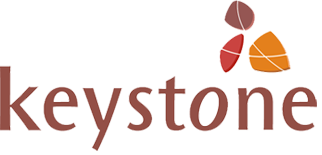 US nonprofit LIFT, which works to end intergenerational poverty, has been using client feedback to test its theory of change.
US nonprofit LIFT, which works to end intergenerational poverty, has been using client feedback to test its theory of change.
LIFT works with low income families in Chicago, Los Angeles, New York and Washington, D.C. Parents (who LIFT call members) are paired with volunteer advocates and they work together to achieve the member’s goals. These could be finding affordable housing, decent education or building confidence and skills to manage tough times.
LIFT has been using Keystone Accountability’s Constituent Voice™ method of collecting and using feedback from their members since 2013. Members answer surveys on iPads following meetings with their advocates. The results are analysed by LIFT staff and discussed with members in groups.
LIFT’s theory of change postulates that two areas will contribute to positive outcomes for the members; a strong, positive relationship with LIFT based on dignity and respect will enable members to make progress on their goals and build their self efficacy and confidence and secondly, strengthened connections to the local community, supportive relationships and positive role models. LIFT’s hypothesis is that the strength of the members’ relationship, social and personal foundations can predict economic outcomes. LIFT is using the member feedback data to explore which elements are most strongly correlated to member success.
Through an alyzing the data LIFT has established a positive correlation between positive feedback given by members on their relationship with LIFT and success in achieving their goals. Members who respond highly to ‘Today, LIFT helped me with the goals and priorities that are most important to me’ make more than three times as much progress on their goals compared to low scorers.
alyzing the data LIFT has established a positive correlation between positive feedback given by members on their relationship with LIFT and success in achieving their goals. Members who respond highly to ‘Today, LIFT helped me with the goals and priorities that are most important to me’ make more than three times as much progress on their goals compared to low scorers.
Based on responses to statements about community connections, role models and social support systems LIFT also found that members who report strong social foundations make 25% more progress towards goals. It also found members with stronger confidence and capacity to aspire make 40% more concrete steps towards their goals.
This is a valuable validation of LIFT’s theory of change but the hunt continues for a predictive indicator. Sophie Sahaf, Vice President Program and Evaluation, LIFT explained that LIFT has been looking an aspect of member feedback that could act as an early warning signal about which members are likely to improve their outcomes and which less likely.
“While we have some promising signals this is not at the level of precision that we would want. However, we have found so much other value in feedback and opportunities for improvement.” – Sophie Sahaf, Vice President Program and Evaluation, LIFT
LIFT’s top ten tips for collecting feedback from constituents:-
- Leadership buy-in is a must
- When designing questions, look to your frontline staff
- Don’t reinvent the wheel
- Test, test and test again
- High quality data relies on a strong survey pitch
- Total anonymity is not necessary for reliable data
- Be mindful of courtesy bias
- Use focus group discussions to provide color to results
- Feedback and rapid prototyping go hand-in-hand
- Continuously reassess and make improvements based on lessons learned
For more information about how LIFT is using client feedback read our full case study and LIFT’s Listening Better report.
